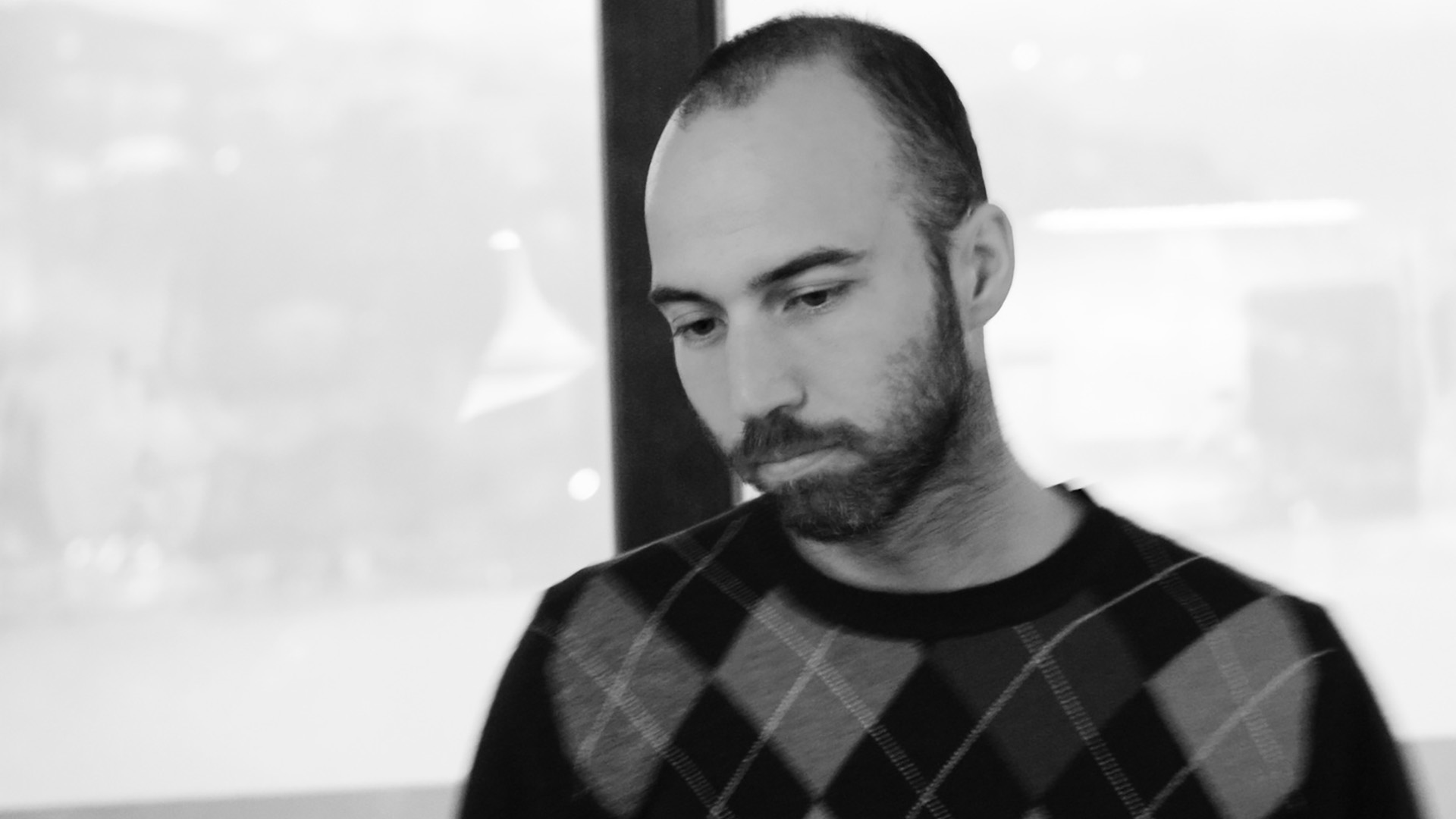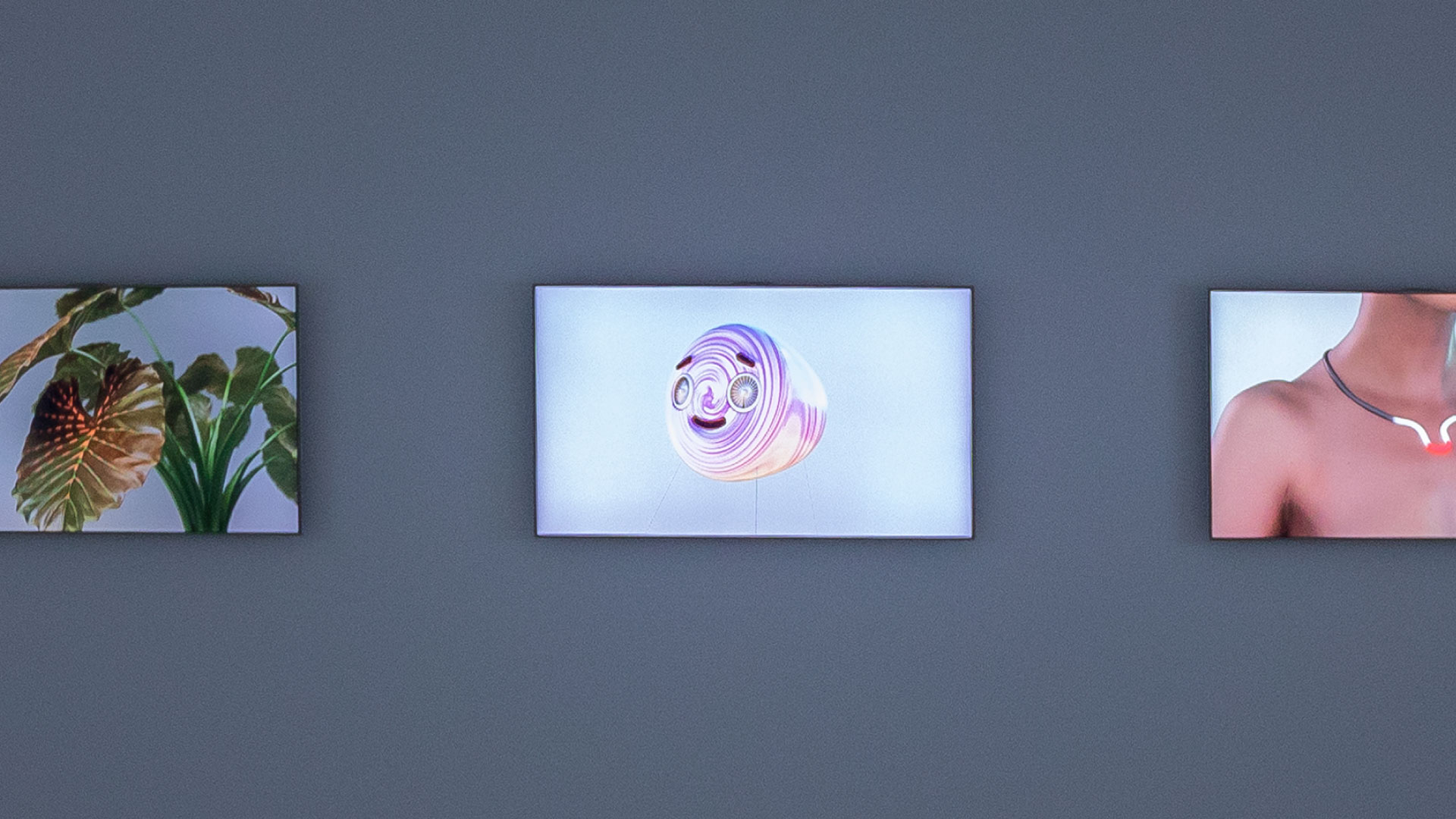Blog
In the Age of the Anthropocene, Identity Elements in Conflict in the Museum Space and the Esthetic Language of Ellen Kooi
17 January 2019 Thu
The rapidly growing population on our planet is depleting natural resources due to industrial production and consumption. In addition to the wasteful use of limited natural resources, we are in trouble with the trash and chemical waste that we produce.
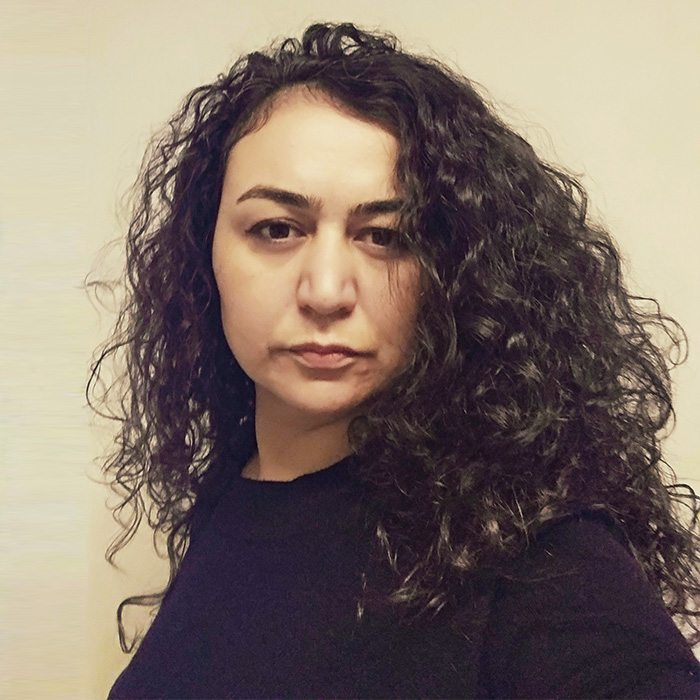
İLKE YILMAZ
yilmazilke@hotmail.com
We are on the verge of a big change; nature is waiting to continue its cycle without us. The paradox of the increase in the number of resources leading to an increase in reproduction which leads to the depletion of those resources has been a process we have been experiencing since the day we transitioned to being an agricultural society, but this problem that has emerged since the second half of the last century has never been so large and irreversible. In particular, our efforts to reach alternative energy sources with the estimations of the near-depletion of fossil fuels lead us to further destroy nature and to make us despair about a solution. It is an undeniable fact that there is a limit of just how generous mother nature can be.
A few alternative media outlets—although with limited resources—, NGOs (all grassroots) and sometimes an art institution, are trying within the framework of social responsibility to draw attention to the future that is waiting for us. Taking a position against the mainstream media which produces this blindness, understanding and telling the truth are transformed into goals. The Borusan Contemporary Art Collection is based on such foresighted thinking. One of the first striking aspects of the collection is the theme of nature and environmental problems, while another is industrial production, which causes such problems. The emphasis placed on nature and the environment emerges from description, representation, and narrative. The emphasis on industrial production is visible in works that adopt forms of production and technique of the industrial, using sturdy materials that can be reproduced, works that are based on repetition and which refer to the mathematical mind, as well as in abstract works. These relations and details lead us to the nature-culture conflict, which is a major component of the history of art, leading the audience to critically engage with the works in the collection. While the mind is highlighted in abstract works that calculate, weigh, and explain everything, the act of sensing, feeling and understanding the truth through “intuition” is executed in a non-linguistic way in works that base their narrative on the image and image-making. In the works from the collection, the balance between the mind and intuition is observed. To look closely at this balance, two photographs of Ellen Kooi will be analyzed through the psychoanalytic method; the castle of the intuition, art, and the castle of the mind, psychoanalysis, will be linked through this interpretation.
The fight against nature, which was launched in the process of constructing culture and modern life, is marked as the “Anthropocene Age”. Starting with the industrial revolution, human activities gained momentum in the 1950s and these activities transform and harm nature, surrounding it with structures and culture. Nowadays, this conflict refers to the climatic and environmental problems that we cannot ignore anymore. While this rudimentary and wasteful attitude of man is rationalized as a search for security and a drive to maintain/preserve their own existence, it will mean the destruction of the human species as a result of this irrational destruction and exploitation. While the human being is dependent on nature in terms of the resources that enable them to survive, on the other hand, they try to gain a superiority against nature and to make it autonomous in their culture. In this variable relationship, both the dependent and the traumatized human become vague while they are vivid. From the point of view of psychoanalysis, art is a human activity which is inspired by such ambiguity. Being aware of this variability that separates the artist from the rest of the society and their relationship with art stems from the need to understand this uncanny situation and develop insight through creative action against this situation. Dark human desire, which is the greatest source of inspiration of art, is the control of this desire and a work of art is a product that emerged during this control process. Human desire is dark and destructive for society, and art is a means to heal this wild desire; in other words, an a priori and unpredictable impulse of our species.
Psychoanalysis is a scientific discipline, and art is the discipline of esthetic narratives produced by intuition and sensation. Both try to bring us to the secret of truth. For science, it is an expression of subjective reality for art, if it can be said that it is related to the knowledge of an objective reality (Erinc, 2004). Science describes this phenomenon as art defines a phenomenon. The identification process is realized through the imagination. The work created with the intuition of the artist is a document that has to be solved for psychoanalysis and carries solid and important data about what is human. Its main purpose is to reach out of our consciousness by eliminating the ego, which censors everything on the way and creates dominance over the work.
Based on all this, the works of Ellen Kooi, a Dutch woman photographer, are worth studying. Kooi's photographs emulate the esthetics of nature depictions of the Golden Age of the 16th-century Dutch painting. Her photographs include landscapes and landscapes of northern Europe, shot in different rural areas. Beyond being only natural representations, these photographs become narratives that have a say in the composition of the modern human. Modern human representations are sometimes placed in the landscape, setting up a pictorial composition, sometimes alone, in a crowded place. Although these figures appear to be interspersed with an esthetic concern here, the physical distance between individuals also emphasizes the mental loneliness of individuals and the “alienation” resulting from this loneliness. This emphasis is on the artist's view of society. This strange feeling of the artist to their lands, society and individuals they grew up with is “uncanny”. The Netherlands, which has all the features of the post-industrial society, has created a prosperous society for its own people with excellent engineering and technical knowledge, but the rapid change in the production process, long and flexible working hours, metropolitan life, the city changing with tourists, migrants and refugees, have also sown the artificial seeds feelings of “loneliness” and “alienation.”
Kooi, in her photograph Velsen-Lampen, shows a young woman standing in the countryside and at the city front in the Velsen city of the Netherlands, a post-industrial society that continues to develop rapidly. We see the woman looking back at the blurry and foggy city skyline. The city, which seems to be barely visible in the form of silhouette due to distance and fog, is invisible and unpredictable; it is even invisible if not looked at carefully. The young woman, who finds her view insufficient and chooses to look to the city ascending from a tree stump, is alienated from her own habitat. It is the symbol of our foggy veil, which covers the whole area where the gaze is directed, makes it invisible and strengthens the sense of alienation. The ego is censored/covered with fog. Although the young woman belongs to the city, she tries to understand it by taking a distance.
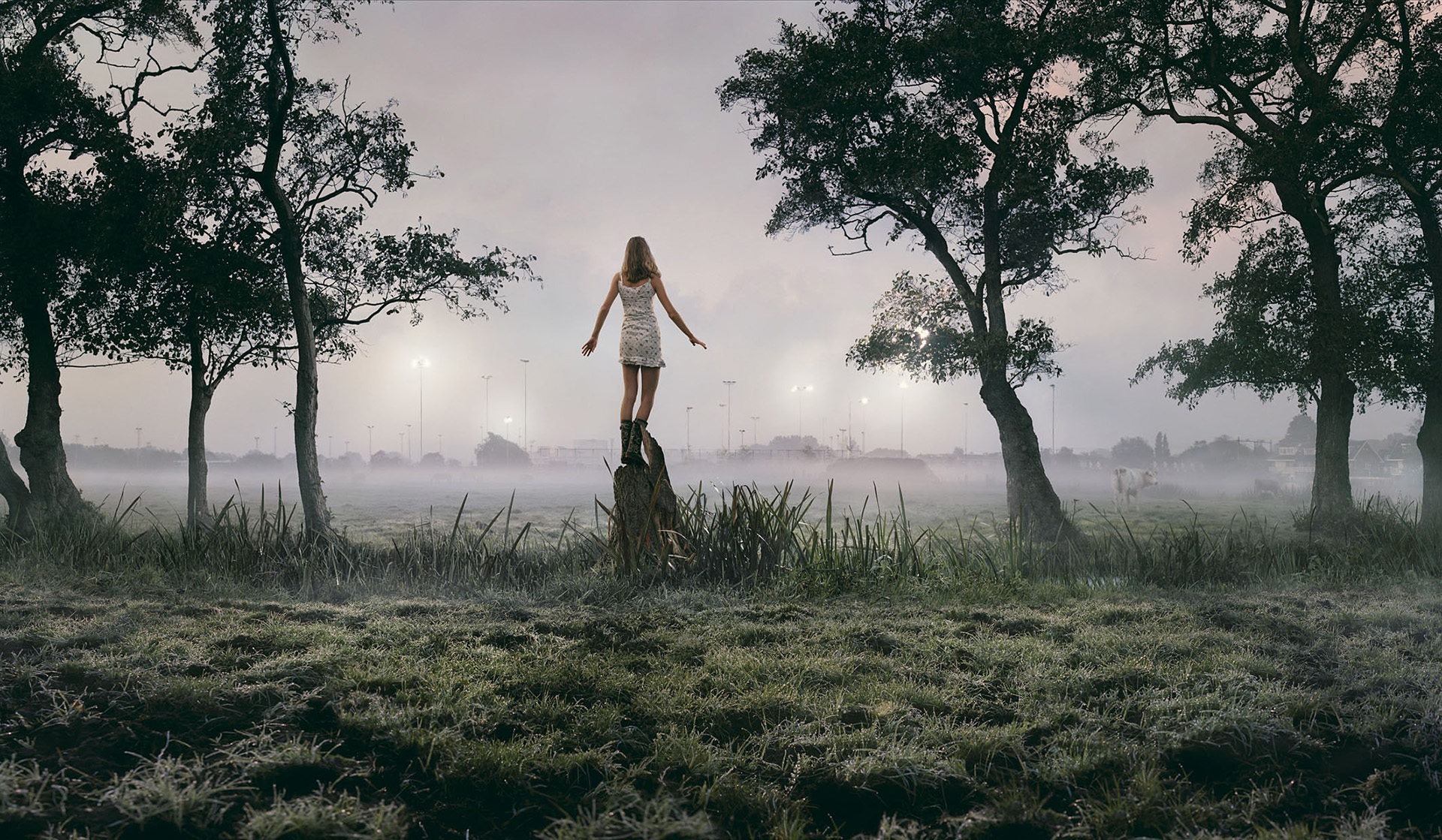
Ellen Kooi, Velsen-Lampen, 2008
The space behind the woman covered with grass places a distance between the audience and even puts the audience in a voyeur position. This field, which is clear to all, but which has no visible image, represents the primitive self. We look at this unseen part of the photograph with the expectation of seeing the subconscious in the fairy tale space and the forest representing the unknown; it is also unknown if the forest is there. The reason why Kooi placed the subject in the photograph at the boundary of the city and the unknown area stems from his intuition to tell the audience the conflict between the id and ego. When the ego seeks the way out to its own existence, it becomes alienated by realizing its predicament. Undoubtedly, it does not belong to this machine-space which is created for working and working of human type concrete blocks. But the darkest side of the human soul, id (primitive self) and the impulses dominated by it, do not belong to the nature in which the modern mind is planed, transformed and rebuilt. The impulses of the human being are under constant manipulation, driven by consumption and believing they can only exist by consuming. However, this belief and quest are in vain; the living space where the modern person’s desires will released and they will reach pleasure have already become other through the tools of culture and civilization, already rehabilitated—there is almost no space on earth that has not been touched by the human hand.
In another photograph of Kooi's, Leiden-Lake, we see a lonely young woman staring at her reflection in the middle of a spring lake. In the landscape in the picture, we are familiar with the light in the Dutch paintings. The composition includes the surface of the bright lake, reeds in the spring with the effect of spring, and birds decorating the sky above.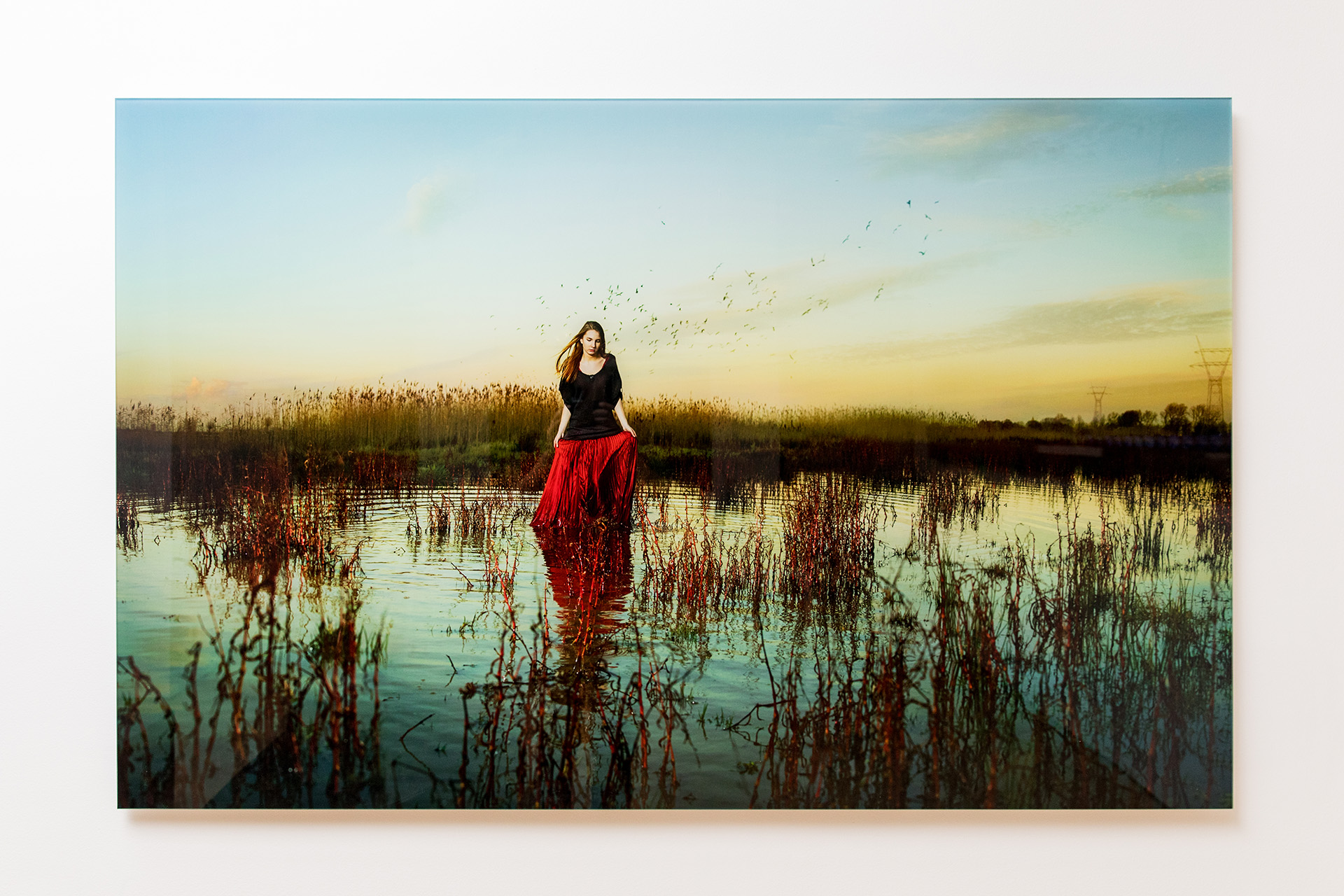
Ellen Kooi, Leiden-Lake, 2016
However, the residues of nature that are left as a result of our relationship with nature are far away from the romantic nature depictions from the 16th century. Beginning in the 19th century, modernity was a new world conception that emphasized reason, subject, science, utopia and discoveries. From that time on, this image, which was etched in our memory, is very much in the nature destruction and truth that we face. The artist's aim is to capture the gaze of the audience with this stereotypical depiction and bring it for comprehension while at the same time criticizing the audience. While transforming nature with its activity, the human transformed themselves into a narcissist in the pursuit of the image of nature they created. The same is like a narcissist looking at their own reflection in the middle of the lake. They insist on looking at the atrocity they created, looking at it with a vain, grandiose delusion. The ghost of the past is made up a lake landscape, the chemical waste of the factories and a dirty pit filled with the sewage from people’s homes.
Finally, it is not a coincidence that Kooi conveyed the message she wanted to relay as an artist to the audience through the photographic medium, and that a mechanical eye, an apparatus replacing the eye, recording these fictional moments. The observation of nature, which is formed without intermediaries within the production activities and life of the rural area, is now waiting for the audience in an aesthetized, open to experience on the wall of a gallery or museum. The machine is the vehicle in the relationship between nature and human. It is only part of alienation to look and experience nature, which is the home of all living beings, from within the frame. Kooi tries to tell her audience that she would rather go to nature and look at this realistic and idealized photograph of the lake, rather than walking for hours, to reach a lake. Man's practice with nature has changed irreversibly. In an anthropocentric age, the audience is almost cut off from nature, but on a screen, in the museum or in the gallery space, it encounters the depiction of the nature of the mechanical eye. In this sense, it would not be exaggerated to say for the camera that the artist is a device of the super-ego that tries to control and record human activity, and thus try to establish dominance over it.
Both of the works transform the space of the museum, which is constructed by the mind, rid of all undesired elements, protected and controlled, into an uncanny intuitive space that appeals to our impulses, but with one difference—a self-awareness of the ugly truth they have estheticized. For eyes that know how to see, the id and the ego are in conflict within the museum space. Kooi’s strength stems from her own self-awareness and the intuition they have developed. The source of this awareness is not the human mind that tries to control everything, but their intuition!
ABOUT THE WRITER
İlke Yılmaz
İlke Yılmaz has graduated from Bilkent University in 2002. Between 2003-2008 she has studied in State Academy of Fine Arts Stuttgart, department of sculpture. During her study in Germany she has involved in an artist initiative as a founder which was called “Local to Local”. In 2009 she has moved to Istanbul and she has received a grant from the Art Center Istanbul which was founded by Borusan Holding between 2010-2012. Her solo exhibitions are “Mind-bending” in 2013 in Sanatorium Gallery, “I Will Love No More” in Singapore Art Stage / Project Space in 2013 representing Sanatorium, “A Room of One’s Own” in Taipei curated by Chin-tao Wu in 2014. During her professional art practice, she has also worked in Borusan Contemporary’s education department, 2011-2016. She has supervised and run programs and workshops for children and adults. Since 2016, she has been working in Türvak Cinema Theatre Museum as an Events Coordinator.

